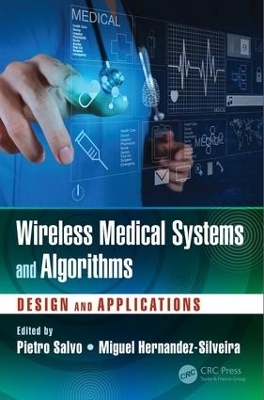
Wireless Medical Systems and Algorithms
Crc Press Inc (Verlag)
9781498700764 (ISBN)
Addressing the latest challenges and solutions related to the medical needs, electronic design, advanced materials chemistry, wireless body sensor networks, and technologies suitable for wireless medical devices, the text:
Investigates the technological and manufacturing issues associated with the development of wireless medical devices
Introduces the techniques and strategies that can optimize the performances of algorithms for medical applications and provide robust results in terms of data reliability
Includes a variety of practical examples and case studies relevant to engineers, medical doctors, chemists, and biologists
Wireless Medical Systems and Algorithms: Design and Applications not only highlights new technologies for the continuous surveillance of patient health conditions, but also shows how disciplines such as chemistry, biology, engineering, and medicine are merging to produce a new class of smart devices capable of managing and monitoring a wide range of cognitive and physical disabilities.
Pietro Salvo received his M.Sc. in electronics engineering and his Ph.D. in automation, robotics, and bioengineering from the University of Pisa, Italy. He has been a graduate student in the Electronics Research Laboratory, Faculty of Electrical Engineering, Mathematics, and Computer Science at Delft University of Technology, The Netherlands; a research associate at the Institute for the Conservation and Promotion of Cultural Heritage, National Council of Research, Florence, Italy; and a post-doctoral researcher at the Centre for Microsystems Technology (CMST), Ghent University, Belgium. Presently, he is a post-doctoral researcher in the Department of Chemistry and Industrial Chemistry, University of Pisa, Italy. Miguel Hernandez-Silveira received his B.Eng. (honours) in computer/electronic engineering from the Universidad Fermín Toro, Barquisimeto, Venezuela and his Ph.D. in biomedical engineering – functional electrical stimulation from the University of Surrey, Guildford, UK. He served as researcher/lecturer and director of the Bioengineering Research Group at the Universidad Nacional Experimental del Táchira, San Cristóbal, Venezuela before joining Sensium Healthcare, Abingdon, UK (a division of the Toumaz Group), where he is currently the Head of Biomedical Technology. Widely published, Dr. Hernandez-Silveira holds four patents in the UK, and he is also a visiting researcher in the Department of Electrical and Electronic Engineering at Imperial College London, UK.
Advances on Technologies for Implantable Bioelectronics. Low-Temperature Microassembly Methods and Integration Technique for Biomedical Applications. Lab on a Cellphone. A Wireless Intraoral Tongue–Computer Interface. Energy-Efficient Hierarchical Wireless Sensor Networks Based on Wake-Up Receiver Usage. Framework for Biomedical Algorithm Design. Cooperative Data Fusion for Advanced Monitoring and Assessment in Healthcare Infrastructures. Energy-Efficient High Data Rate Transmitter for Biomedical Applications. Toward BCIs Out of the Lab: The Impact of Motion Artifacts on Brain–Computer Interface Performance. An Advanced Insulin Bolus Calculator for Type 1 Diabetes.
| Erscheinungsdatum | 11.08.2016 |
|---|---|
| Reihe/Serie | Devices, Circuits, and Systems |
| Zusatzinfo | 20 Tables, black and white; 28 Illustrations, color; 102 Illustrations, black and white |
| Verlagsort | Bosa Roca |
| Sprache | englisch |
| Maße | 156 x 234 mm |
| Gewicht | 1500 g |
| Themenwelt | Schulbuch / Wörterbuch |
| Medizin / Pharmazie ► Physiotherapie / Ergotherapie ► Orthopädie | |
| Technik ► Elektrotechnik / Energietechnik | |
| Technik ► Maschinenbau | |
| Technik ► Medizintechnik | |
| Technik ► Nachrichtentechnik | |
| Technik ► Umwelttechnik / Biotechnologie | |
| ISBN-13 | 9781498700764 / 9781498700764 |
| Zustand | Neuware |
| Informationen gemäß Produktsicherheitsverordnung (GPSR) | |
| Haben Sie eine Frage zum Produkt? |
aus dem Bereich


